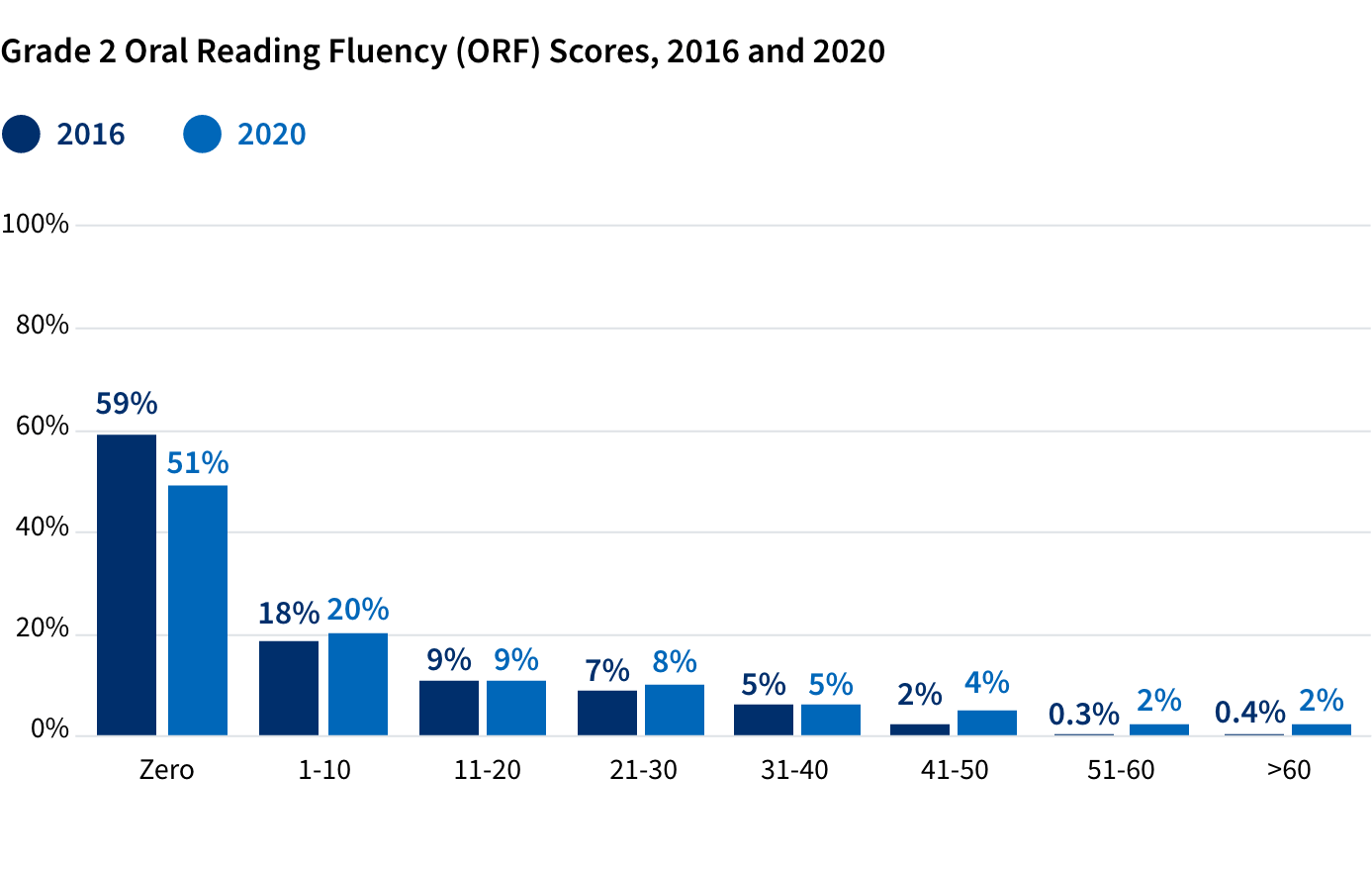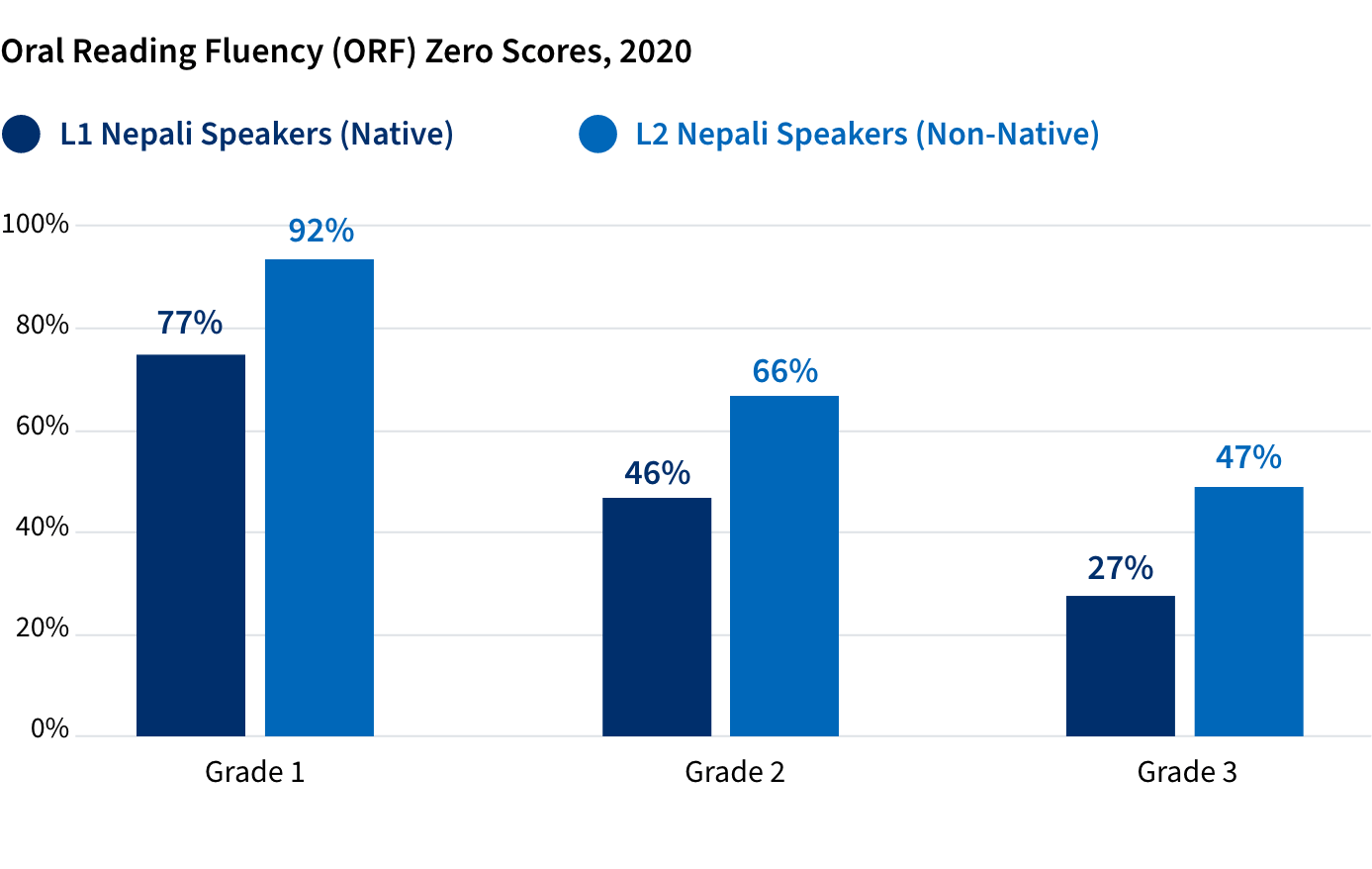The USAID Nepal Early Grade Reading Program provides technical support to the Government of Nepal’s Ministry of Education, Science and Technology’s (MoEST) National Early Grade Reading Program (NEGRP). The program’s goal is to improve reading fluency and comprehension among children in grades 1-3.
The 2020 EGRA represents the Endline assessment of the program. We can explore the program’s outcomes by using the Early Grade Reading Barometer.
There is an overall improvement in reading fluency in 2020 for all three grades. For example, Grade 2 outcomes include a reduction of reading fluency zero scores by 8.2%.
Additionally, we can view outcomes by L1 and L2 categorization. L1 categorizes a student as a native speaker of Nepali, which is the language of instruction in Nepali public schools. The L2 categorization means a student is a non-native speaker of Nepali, the student most likely speaking a different language at home. Looking at the Assessment Outcomes area of the report, we see that more L1 Nepali speakers can read at least one word in the given reading passage compared to L2 Nepali speakers.
For more information about the Early Grade Reading Program in Nepal, please see the Nepal Fact Sheet (PDF, 104 KB).




